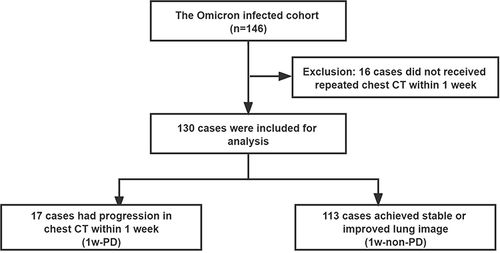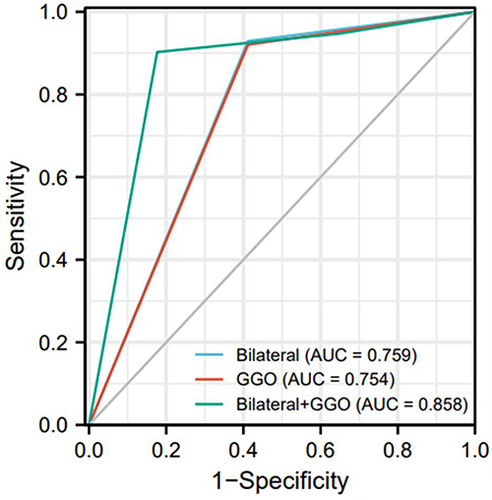Figures & data
Table 1 Characteristics of the COVID-19 Subjects
Table 2 Laboratory Test Data
Table 3 Initial Disease Evaluations
Table 4 SARS-CoV-2 IgG and Viral Loads
Table 5 Initial Radiologic Findings and the One-Week Progression
Table 6 Univariate Analysis of the Risk Factors for Disease Progression in the Omicron Cohort
Figure 2 Multivariate analysis of the risk factors for radiological progression within admissive one week in the Omicron cohort. GGO-pneumonia yielded an OR of 7.288 (95% CI, 1.677–31.670, P = 0.008). Bilateral pneumonia was found to be the second most important risk factor with an OR of 7.530 (95% CI, 1.402–40.426, P = 0.019).



